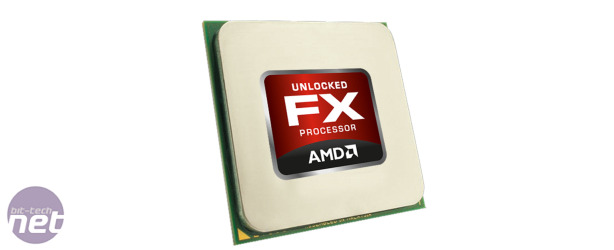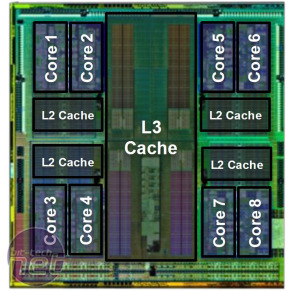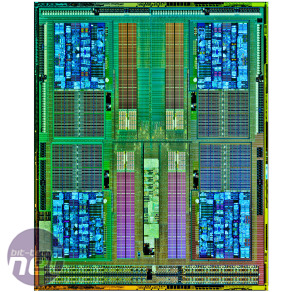
AMD FX-8350 Review
Manufacturer: AMDUK price (as reviewed): £149.98 (inc VAT)
US price (as reviewed): $219.00 (ex TAX)
After the crushing disappointment that was the Bulldozer architecture and its line of FX-CPUs last year, AMD’s new CPUs now face an even sterner test. Since the release of the FX-8150 and the subsequent line of FX-branded CPUs, Intel has compounded its woes with its Ivy Bridge architecture’s 22nm die-shrink, increasing performance while dropping power consumption.
AMD's FX-line of CPUs is back
AMD’s response is its new line of FX-CPUs (codenamed Vishera), led by the flagship chip, the FX-8350 and based on its new Piledriver architecture. Those hoping for a completely new architecture from AMD to readdress the balance of CPU power will be disappointed though, as Piledriver is an optimised version of Bulldozer and not a ground-up redesign. However, AMD claims up to 15 per cent performance improvements in some circumstances, so clearly there’s been a great deal of fine-tuning.
Unlike Intel’s ‘Tock’ and ‘Tick’ roadmaps which typically see ‘Tock’ architecture benefiting from a die-shrink, Piledriver is still made on the same 32nm process as its predecessor, and even matches Bulldozer in die-size (315mm²) transistor count (1.2 billion) and peak TDP (125W). So just what has AMD changed?
The chip design in mostly unchanged from Bulldozer, with the same layout and cache structure
Piledriver is still based on the same basic design as Bulldozer, with the ‘8-core’ chip containing four Piledriver modules, each of which contains a pair of integer cores. While AMD markets these as individual CPU cores, each module’s pair of integer cores shares a number of resources, including the fetch and decode units, a Floating Point scheduler (FPU) and 2MB of L2 cache. This is part of AMD’s design philosophy of focusing on multi-threaded performance, with each module able to process two threads simultaneously. As we found last year though, this comes at the cost of single-threaded performance and with the down-side that relatively few applications are able to make use of four cores in multi-threaded workloads, let alone eight.
With the same basic layout, AMD’s improvements have focused on the Piledriver module while leaving the CPU's layout untouched, with many small tweaks adding up to an overall improvement in performance. Improved scheduling for the floating point unit and integer cores, an improved hardware prefetcher, L2 cache efficiency improvements and faster instruction execution all contribute to the increase in performance over last year’s chips, an impressive feat considering the physical limitations. AMD has also added support for the FMA3 and F16C instruction sets.
Improvements have been made however throughout the Piledriver module
The FX-8350 is also a healthy step up the MHz ladder from its predecessor. With a core frequency of 4GHz (20 x 200MHz) and the ability to Turbo Core (AMD’s version of Turbo Boost) upto 4.2GHz, it’s clocked 11 per cent higher than its predecessor despite the same 125W TDP. It’s priced far more competitively than the FX-8150 too; while last year’s top Bulldozer chip went on sale for around £200, the FX-8350 is a far more wallet friendly £150, seeing it go head-to-head with Intel’s Core i5-3570K. The FX-8350 still uses the AM3+ socket design too, so those who grabbed a 990FX chipset motherboard can simply update the BIOS and swap out the CPU.
Overclocking
As with all of AMD’s FX chips (as well as, confusingly, ‘K’ and Black Edition brands too), the FX-8350 possesses an unlocked CPU multiplier, allowing for straight forward overclocking. Unlike our exploits with the FX-8150, which required voltage increases to the North Bridge and HTT, with the FX-8350 we only needed to increase the core voltage from its default of 1.4V to 1.5V. We also disabled the usual array of c-states and AMD’s Cool’n’Quiet, and increased load line calibration to its ‘Ultra’ setting. Following these fairly minor adjustments, we were able to reach a core frequency of 4.8GHz (24 x 200) in an overclocking process that rivals the ease of Intel’s Ivy Bridge CPUs. However, any further increases to the core frequency, regardless of core voltage, led to core failures in prime95 for this sample at least, 4.8GHz looked to be the limit with consumer cooling.AMD FX-8350 Specifications
- Frequency 4GHz
- Turbo Frequency up to 4.2GHz
- Core Piledriver
- Manufacturing process 32nm
- Number of cores eight physical
- Memory controller Dual-channel DDR3
- Cache 8 x 16KB L1 data, 4 x 64KB L1 instruction, 4 x 2MB L2, 4 x 2MB L3
- Packaging Socket AM3+
- Thermal Design Power (TDP 125W
- Features SSE, SSE2, SSE3, SSE4a, SSE 4.1, SSE 4.2, 256-bit AVX, AESNI, PCLMULQDQ, AMD64, Cool’n’Quiet 3.0, AMD-V, MMX, FMA4, FM3, F16C, XOP

MSI MPG Velox 100R Chassis Review
October 14 2021 | 15:04












Want to comment? Please log in.